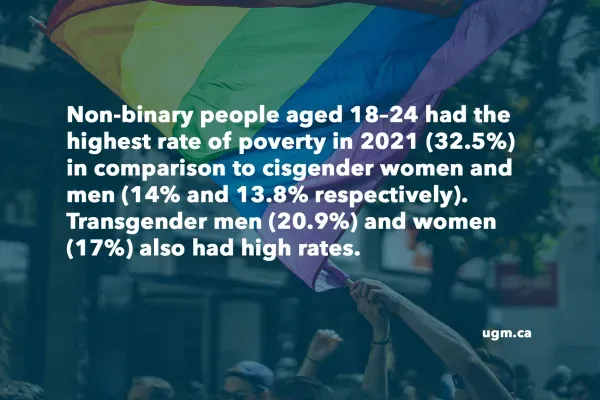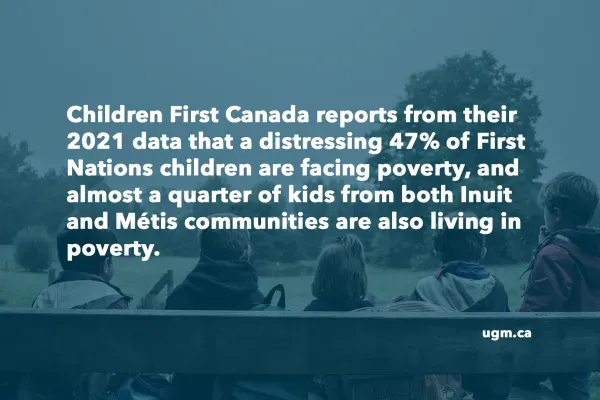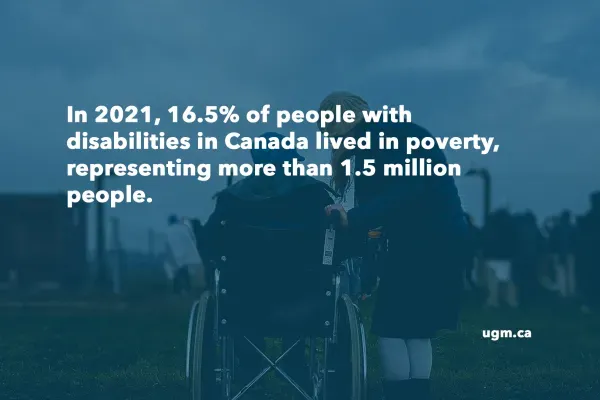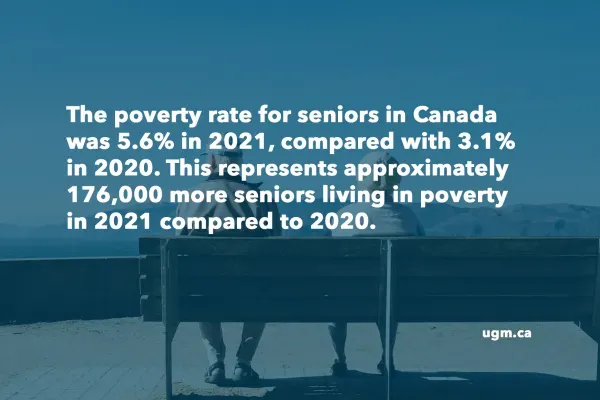With continually increasing costs of rent, gas, food, and other essentials, living in Canada is expensive. Some people live paycheque to paycheque, while others are no longer able to afford their basic needs. Poverty in British Columbia and Canada overall is a growing concern: it’s estimated that millions of people are currently struggling to make ends meet. We’ve put together this resource to uncover the reasons for this, how it affects Metro Vancouver, and the future of poverty in Canada.
Table of contents
Canada is a resource-rich country. Despite that, 6.9 million people in Canada are experiencing food insecurity — a key sign of poverty — not knowing where their next meal will come from. Canada’s system of assessing poverty is called the Market Basket Measure (MBM), which compares a family’s income with the average cost of a basket of goods and services in the city they live in. (Statistics Canada made a handy video about the MBM that further unpacks this measurement system.) If a family can’t afford the cost of their food, clothing, transportation, and housing, they are considered low-income, or living below the poverty line.
At its most basic level, poverty is not having enough money for everyday necessities, like food, shelter, healthcare, education, medical expenses, or transportation. The factors that lead to individuals and families experiencing poverty in Canada are complex and multi-layered, but the tragic reality is that poverty can happen to anyone, at any time.
What causes poverty?

Poverty has systemic roots. In Canada, many families are struggling to survive amid an affordable housing crisis, a lack of available jobs, and the rising prices of essentials like groceries and gas. While it would be equitable for all jobs to pay employees a living wage that increases based on the economy, that’s not the case currently in Canada. The MBM puts the cost-of-living threshold for families in Vancouver at $58,163 for 2023. With minimum wage salaries in BC not putting two-parent families much above that line, it can be difficult for individuals and families to avoid poverty even while working full-time.
Certain people groups experience poverty at higher rates than others. People who identify as 2SLGBTQIA+, Indigenous, people with disabilities, newcomers, and refugees may face discrimination when applying for work. Geographical barriers exist as well; many Indigenous communities live in remote areas that lack infrastructure and opportunities. Historically, Indigenous people have also been excluded from the economy through laws like the Indian Act. These laws included property rights restrictions that prevented capital gains, and reserve lands were often less resourced — making it harder for businesses and employment opportunities to thrive. The lasting intergenerational trauma from Canada’s residential school system continues to affect the health and well-being of Indigenous communities to this day.
The pay gap present in the country also contributes to the increasing risk of poverty; working women continue receiving less pay than men. In a statement on International Equal Pay Day 2023, Canada’s Minister of Labour said, “For every dollar a man earns in Canada, a woman earns about 90 cents. For a woman of colour, that gap is even bigger.”
Addiction and substance abuse disorder can also lead people into poverty. Addiction is expensive, and is harder to maintain the longer a person struggles.
These are just some of the barriers people face in overcoming poverty. Others include:
- Physical or mental health challenges that keep people from regular employment.
- A lack of available full-time jobs with adequate living wages where the person lives. For example, some community members at Union Gospel Mission in Vancouver find temporary work in manual labour jobs, but that work isn’t guaranteed every day.
- Unexpected health events. Service industry and other low-barrier jobs don’t typically provide enough income to cover an individual’s living expenses, and they don’t offer extended medical and dental care benefits.
- The cyclical nature of poverty. In order to receive social assistance, people living in poverty have to prove their income is low enough. This means that as their situation changes even slightly, their safety net vanishes — often before they’ve reached financial viability.
- Family change. Ellen’s family fell into poverty when she went through divorce and became the main breadwinner for her three children. Families can also encounter loss and death, which have profound impacts on their ability to remain afloat.
Any one of these factors — or a range of them — can contribute to someone experiencing poverty and not being able to get out.
What does poverty look like in Canada?
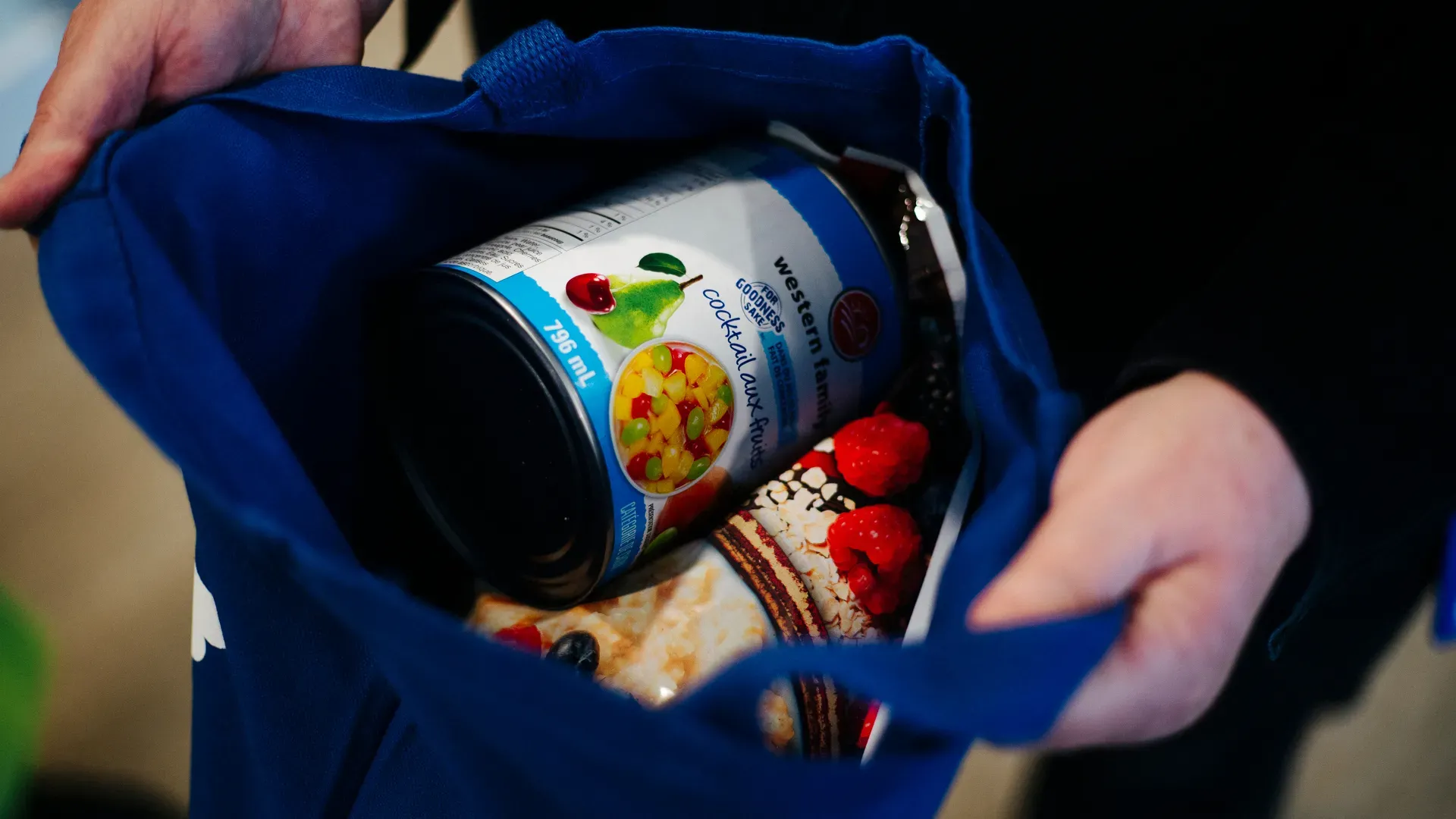
Poverty can be hidden, like kids skipping lunch because their families can’t afford it, and it can also be noticeable in our neighbourhoods and communities. It can look like a single parent working multiple jobs seven days a week to put a little bit of food on the table. A newcomer who doesn’t have a thick and warm winter coat. Someone who is sleeping in their car because rent is too expensive. Poverty can affect all ages, and because it can be cyclical, it is often intergenerational.
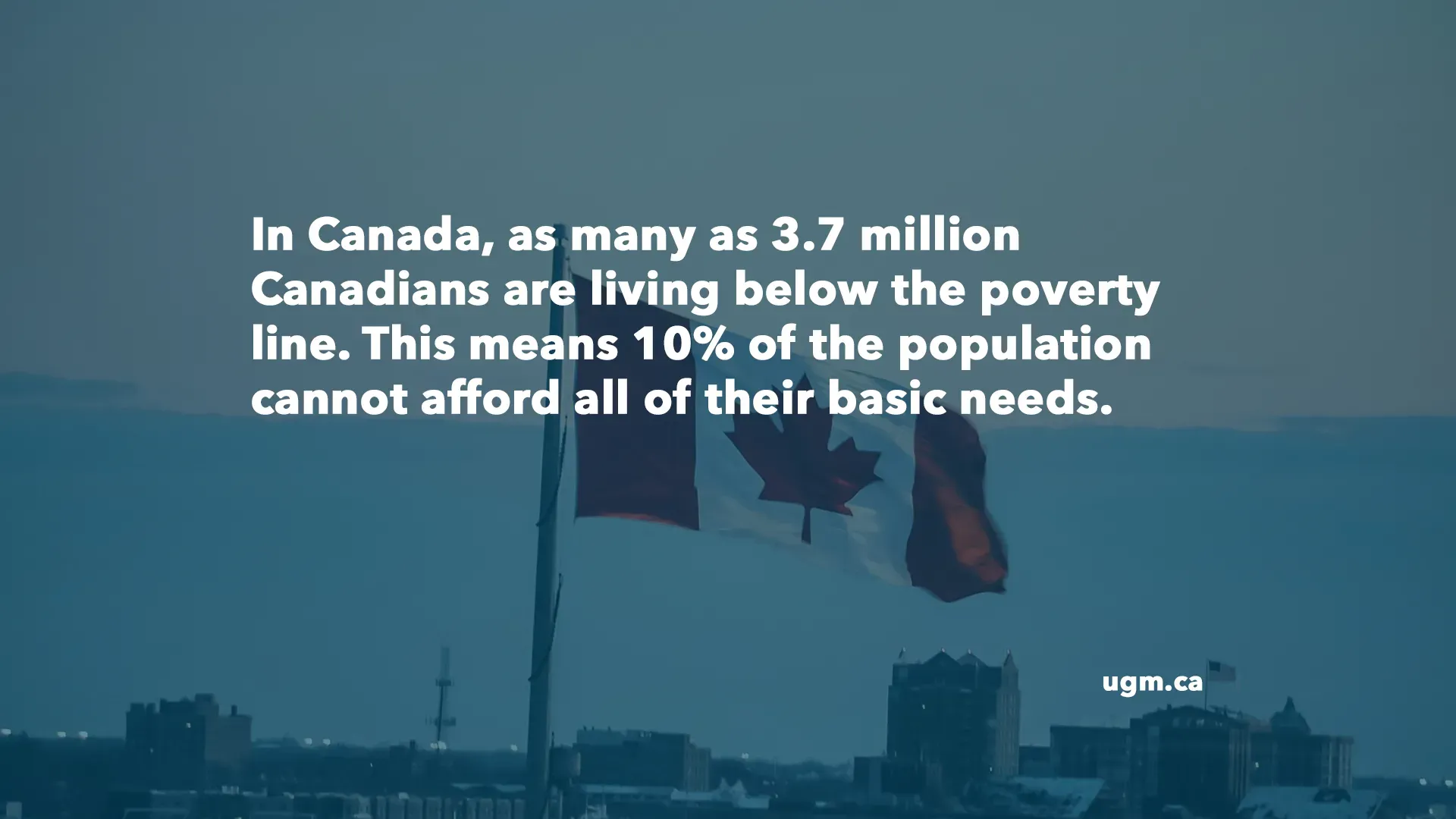
“It’s very hard to get out of systemic poverty,” says Ellen, a Community Outreach Worker on staff with the UGM Eastsiders After School Program with her own lived experience of poverty. “I've been to Niagara Falls several times, and there's this place, it’s called The Point of No Return. Once you get that far, that close to the falls, there’s no way you're not going over. I think sometimes being poor is swimming at that line, all day, every day. And no matter how hard you try, you just don’t get away from the falls. And that is exhausting. And it’s so discouraging.”
What are the effects of poverty?
|
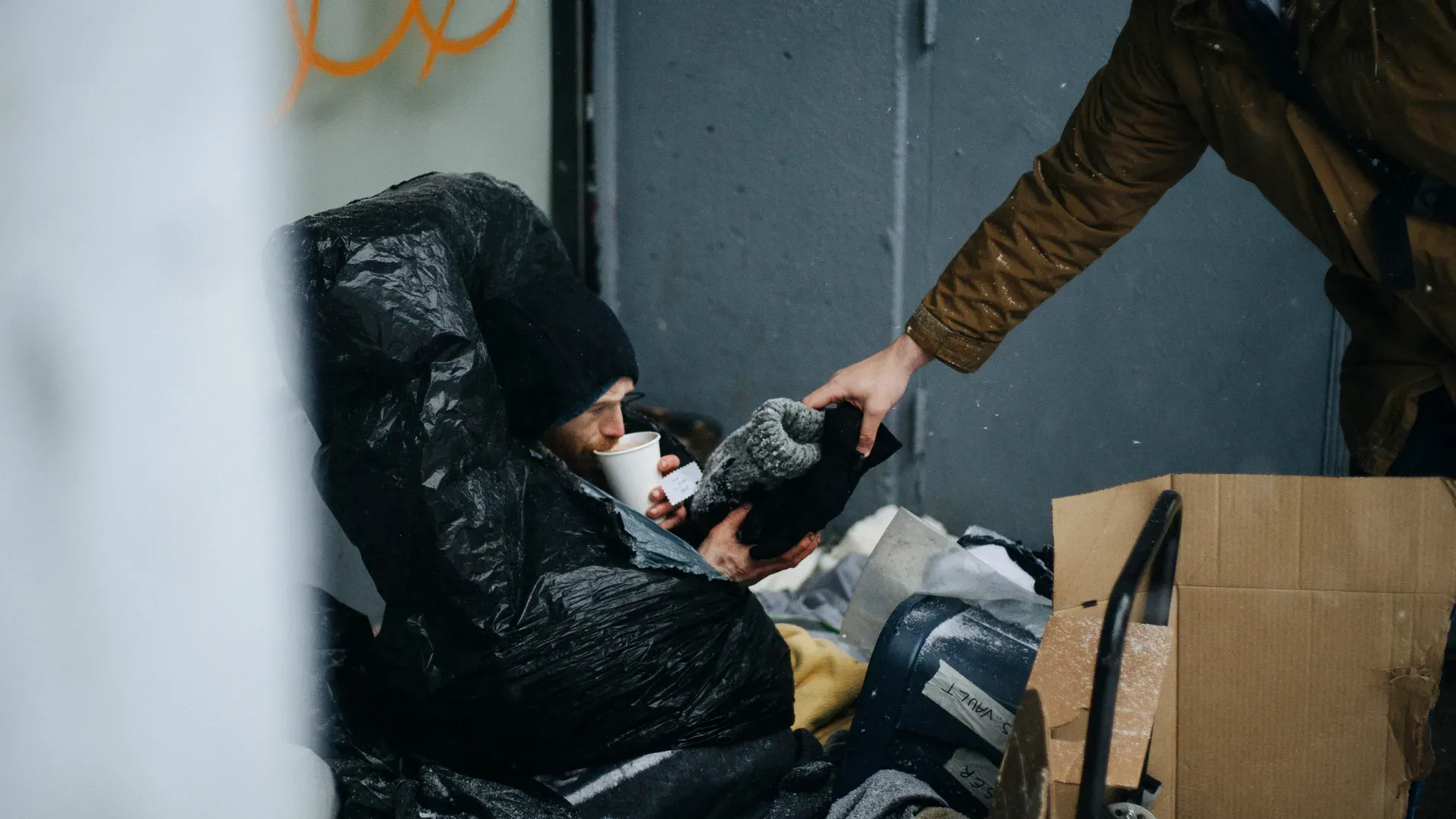
Not having enough money for the things you need to live can be overwhelming and devastating. People who are experiencing poverty often can’t afford necessities like adequate and safe housing, nutritious food, childcare or further education, medical and dental care, mental health support, transportation, and more. People end up forced to make major sacrifices in order to survive. People can lose housing, might frequent food banks in their neighbourhoods, or might put themselves in risky situations to make more money because they feel they have no other option.
The number of people who visited food banks in a year reached over 1.9 million in March 2023 according to Food Banks Canada. This was an over 32% increase from the year before. One third of the people accessing food banks are children and youth under the age of 18.
Because of their difficult life conditions and income inequality, people can experience depression, anxiety, chronic illnesses, or form addictions, which in turn can entrench them further into poverty. Poverty impacts everyone from infants to seniors financially, physically, and emotionally. The Canadian Mental Health Association quotes from Dennis Raphael’s textbook Poverty in Canada, stating that “poverty — and the material and social deprivation associated with it — is a primary cause of poor health among Canadians.”
How does poverty affect children?

Nearly 1 million children were living in poverty in Canada last year. That rate dipped during the pandemic due to the temporary government benefits that were given to families. However, because of the continuous high cost of living Canadians are currently experiencing, child poverty is expected to increase in the future. Children living in a single-parent household are five times more likely to live in poverty compared to other children.
Poverty can affect child development and growth, as poor nutrition can lead to chronic illness and disease later on in life. Children living in poverty are at a higher risk of heart disease, diabetes, and even death. Apart from physical health, they are twice as likely to access healthcare for mental health issues or substance use disorders than children living above the poverty line. The more severe the food insecurity, the greater the number of hospital visits.
Poverty can influence a lack of educational opportunities, meaning that kids experiencing poverty might have low educational levels, and later lower-paying jobs. Kids who grow up in poverty have an increased risk of becoming adults living in poverty. Twice as many people surveyed in a Statistics Canada study reported poor or fair health as adults than those who grew up in higher-income households.
Looking to talk to your kids about poverty? Explore this guide.
How does poverty affect education?
Poverty can also affect education — the high cost of education can be a large barrier to increased incomes and exiting poverty. Households experiencing poverty might not be able to afford resources like books, computers, and the reliable internet access necessary to support kids with homework and enhance their learning. Statistics Canada did a study in 2000 and then again in 2015 on the academic results of high school students from higher and lower income households. They found a gap — students from higher-income households had higher scores in reading, math, and science tests; and eight years later as young adults they also had more educational achievements and academic success. According to Statistics Canada, children from families with lower incomes were 25.3% less likely to have a university degree. Poverty can cause academic inequity, giving students less access to resources and opportunities that could contribute to their options in the future.
Can poverty cause mental illness?

Poverty can take a toll on people’s mental health. Not having one’s essential needs met, like shelter, food, a stable job, or access to healthcare, can be detrimental to one’s mental health. In a government survey, Canadians from the lowest income group reported not having enough mental health support. The same group also reported — unsurprisingly — less life satisfaction. More adults living with low income report higher anxiety levels, at a rate of 2.4 times more than adults making the most income.
Poverty can also impact someone’s feeling of dignity, their ability to provide for their family, their physical health, and can isolate them from their community. Students might feel self-conscious and less worthy than their peers when they can’t afford the same luxuries — or even necessities — that give their classmates academic or social privileges. A parent who sees her children getting thin and being tired from not having enough food may become overwhelmed by sadness and guilt. A newcomer trying to make a new life for themself in Canada but not being able to find affordable housing could easily be wracked with anxiety and depression. Facing consistent financial insecurity can be stressful and emotionally draining.
There’s an element of societal shame when it comes to poverty that often prevents people from asking for help or support. The isolation that poverty can cause adds to the toll on people’s mental health — the feeling that they’re suffering alone, and no one is coming to save them.
Youth in low-income households report having less hope. Children can develop mental health issues like hyperactivity and inattention because of poverty. Childhood hunger, and all the mental health and physical health impacts it brings, can increase kids’ risk of depression and suicidal ideation when they’re older. Not having what they need to thrive mentally, physically, and emotionally can push everyone — children, youth, and adults — to the brink.
For adults, the more severe their situation of poverty and food insecurity, the more likely they will need medical support for their mental health. This can look like going to a doctor, visiting the emergency room, or even being hospitalized. The problem is also intersectional: facing mental health problems can affect a person’s ability to work, which can keep them in poverty.
What do people face on their journey out of poverty?
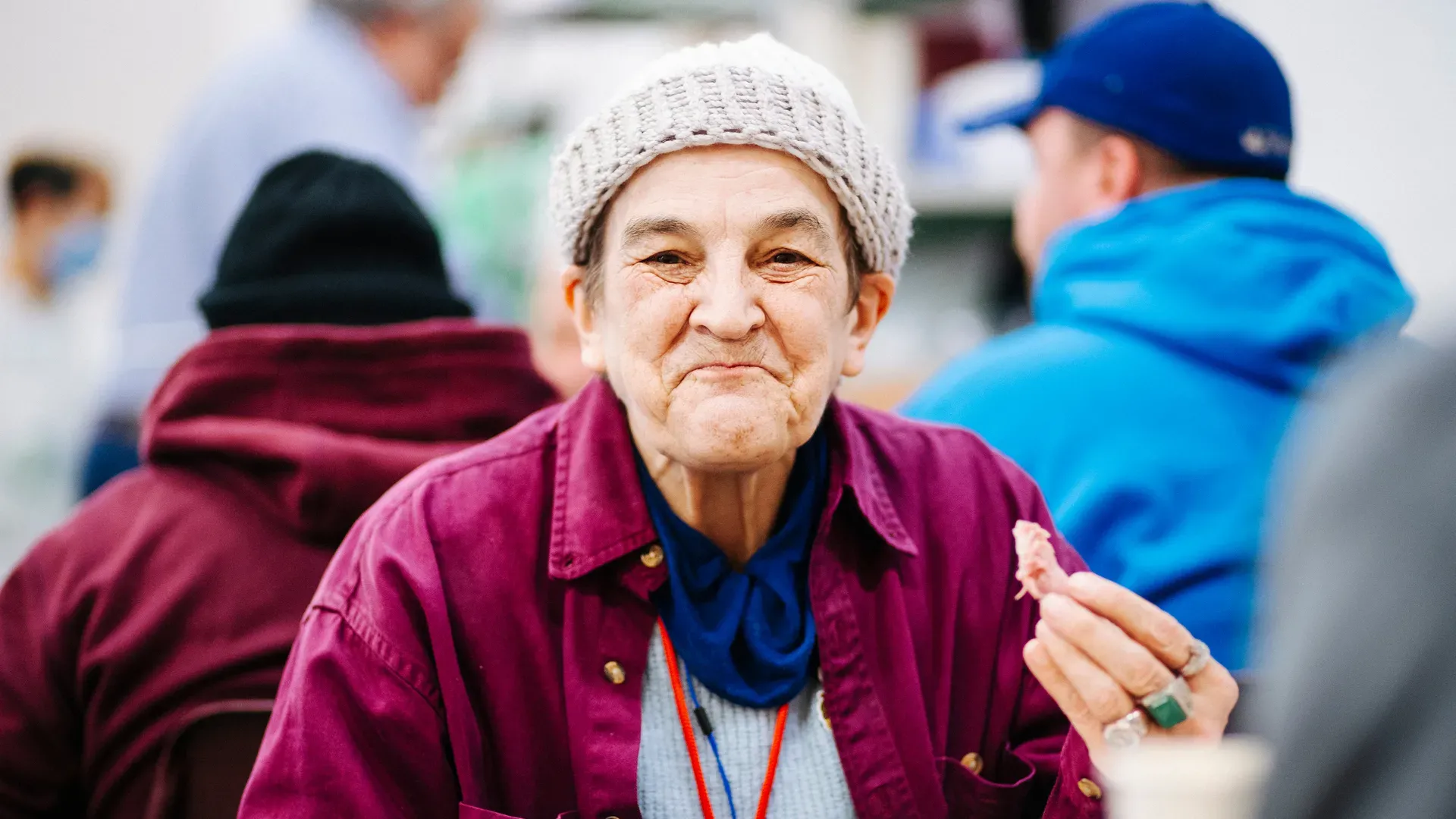
While we always aim to present facts in a way that spares people harm, it’s important for us to acknowledge that these facts paint only part of the picture of what it’s like to live in poverty. What we see in our daily work at UGM is that individuals and families face incredible stigma as they seek ways out of poverty and into financial stability. You only have to do a brief search online to come across derogatory stereotypes accusing people living in poverty of laziness, poor parenting skills, and dependance on government assistance. People on reduced incomes are judged for their purchasing decisions, and are subjected to scrutiny over whether they “need” certain luxuries or creature comforts. Single mothers, especially, often feel the pressures of providing for their families while disguising their financial struggles. There is a collective societal disdain for people living in poverty that makes it enormously difficult for people to ask for help, and to assume they’ll be met with kindness or understanding.
We want to be clear that every person is worthy of care, respect, and dignity. From the senior on a fixed income to the young mother facing a rental crisis, no one sets out in life to experience poverty, and not everyone can escape it without help. You can make every “right” decision and still have your circumstances altered, whether by unjust systems or unexpected loss. It’s for this reason that we emphatically and continually advocate for the value and inherent personhood of our community members at all stages of financial independence: we are all people doing the best we can with what we’ve been given.
Kristy found herself without a home. Read her story of recovery here.
Will poverty increase in the future?
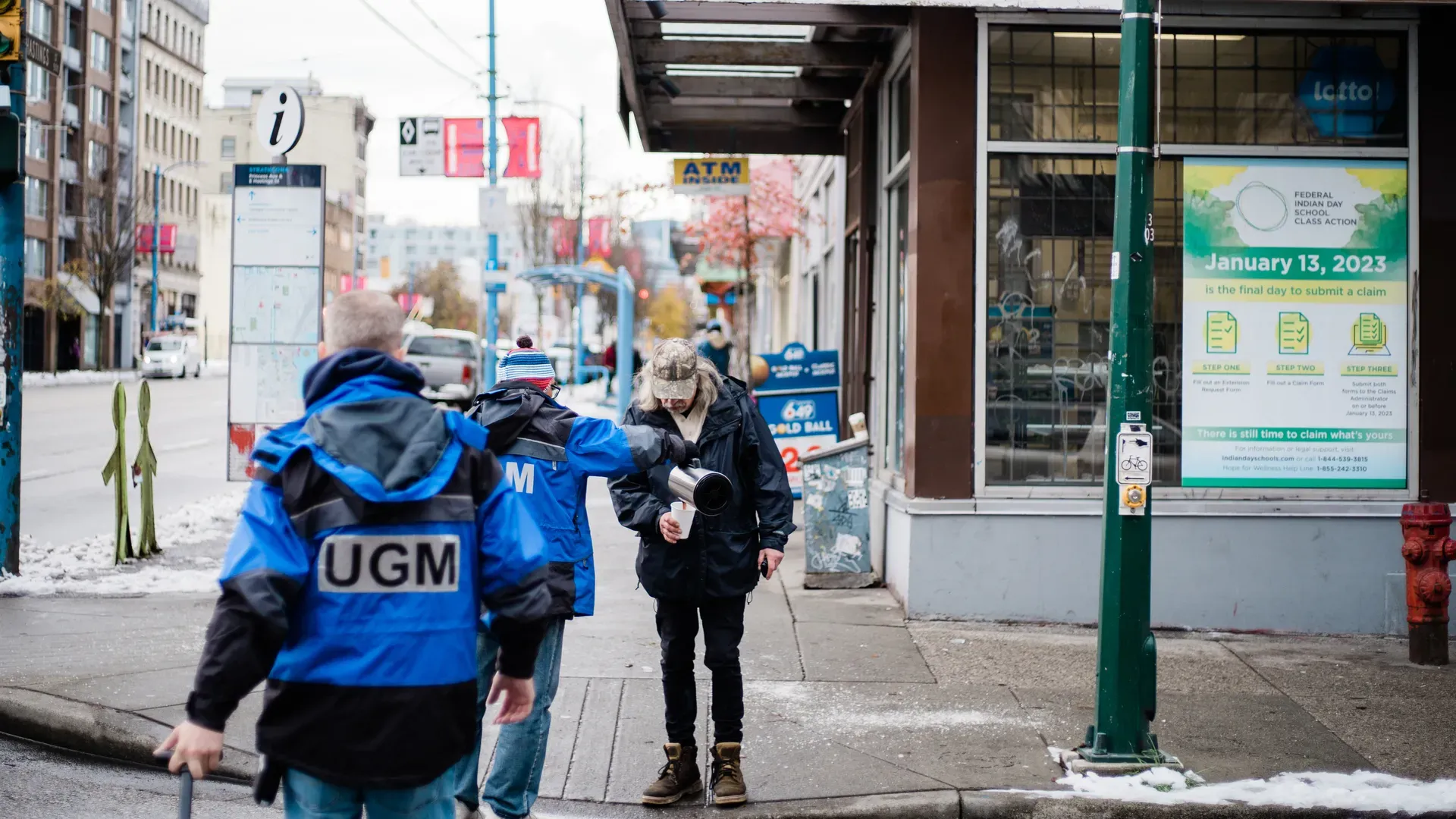
Canada’s Official Poverty Line, which shows the country’s poverty rate, has declined over time. It more than halved from 2015 to 2020, but since 2020 the rate has increased. In 2021, the poverty rate was 7.4%, compared to 6.4% in 2020. Using the Market Basket Measure data from 2021–2022, the federal government predicted a poverty rate of 10.2% in 2023. Food Banks Canada predicts that poverty has a greater chance of increasing across the country in the future because of an increase in population growth, wars around the world impacting food prices, inflation raising many living costs, and the ongoing need for more affordable housing and social support programs. However, Food Banks Canada suggests that if policymakers can target these potential issues preemptively, it can give more people access to economic stability.
Can poverty be eliminated?

In 2015, Canada committed to adopt 17 Sustainable Development Goals to eradicate poverty. One long-term target was to cut the amount of men, women, and children facing poverty by 50% by 2030. The federal government currently provides several supports like the Canada Child Benefit, the Canada Workers Benefit, the Guaranteed Income Supplement and more to reduce poverty, but recognizes the need to increase benefits and make them more accessible.
The federal government also says it’s continuing to invest in social programs like childcare and dental care to increase the well-being of Canadians trying to make ends meet. The government also recognizes that there’s an urgent need for further poverty reduction in First Nations, Inuit, and Métis communities, due to the historical and lasting effects of colonialism, racism, and discrimination.
In a recent post on worldwide poverty, World Vision laid out eight transformative ways to end poverty. The suggestions that would apply to Canada include ensuring education for children, making healthcare available and accessible, improving childhood nutrition, and supporting environmental programs.
Canada formed a National Advisory Council on Poverty to keep the government accountable to its goal, but citizens can also play a role by using their voice to make sure poverty eradication is kept a focus — so those most vulnerable, like seniors and children, don’t continue paying the price.
“As people that care about these issues, we have to be a collective that makes our voice known. That’s a big motivator for me: if there’s enough of us voting and speaking out, that will make a change.” — Ellen, Community Outreach Worker
Alleviating poverty and transforming generations

Whether Canada will reach its target to halve poverty by 2030 is unknown, but having more financial, physical, mental, and social supports will be crucial to improving the health outcomes of everyone in the country. A holistic approach to poverty eradication will improve supports to all age groups.
In locations across Metro Vancouver, the Fraser Valley, and Greater Victoria, Union Gospel Mission is working to support individuals and families going through poverty by providing affordable housing, addiction recovery programs, emergency weather supplies, meals, daycare, and more. People in our communities are facing unimaginable obstacles, but we’ve seen time and time again the incredible transformations that can take place when people ask for help and are met with compassion.
Find out more about UGM’s ongoing efforts and how you can help here.
Sources and further reading:
- Sounding the Alarm: The Need to Invest in Working-Age Single Adults
- Decoding Canada’s Poverty: Understanding the Market Basket Measure
- Understanding Systems: The 2021 report of the National Advisory Council on Poverty - Canada.ca
- The Risk and Depth of Poverty in Canada: A Statistical Profile
- Tackling Poverty Together - Canada.ca
- An Overview of the Indigenous Economy in Canada
- The National Indigenous Economic Development Board 2019 Indigenous Economic Progress Report Recommendations Revisited
- Statement by Minister O’Regan on International Equal Pay Day - Canada.ca
- 10 major causes of poverty and how we can help solve them
- Pandemic Lessons: Ending Child and Family Poverty is Possible
- Top 10 Threats to Childhood in Canada
- Disability Poverty in Canada
- Question Period Note: Poverty among Seniors in Canada
- Elderly Poverty - The Conference Board of Canada
- Just the Facts - Poverty in Canada
- Overall Findings - Food Banks Canada
- Poverty | The Homeless Hub
- Poverty and Mental Illness
- Child Poverty in Canada
- Household food insecurity and health service use for mental and substance use disorders among children and adolescents in Ontario, Canada | CMAJ
- Intergenerational income mobility: The lasting effects of growing up in a lower-income family
- Inequality Explained: The hidden gaps in Canada’s education system
- Academic Outcomes of Public and Private High School Students: What Lies Behind the Differences?
- Mental health inequalities by income in Canada
- 8. Poverty, mental health and addiction | Ontario Human Rights Commission
- Navigating Socioeconomic Obstacles: Impact on the Well-being of Canadian Youth
- Food Insecurity and Mental Health
- Dimensions of Poverty Hub
- Modelled Market Basket Measure poverty rates for 2022 and 2023
- Poverty Report Card - Food Banks Canada
- Blueprint for Transformation: the 2023 report of the National Advisory Council on Poverty - Canada.ca
- 8 World-Changing Solutions to Poverty


